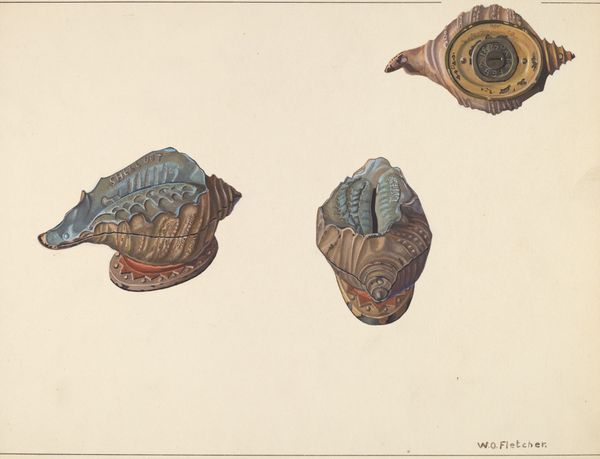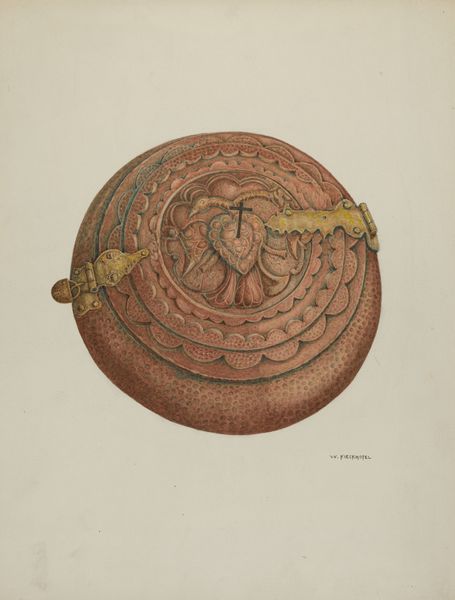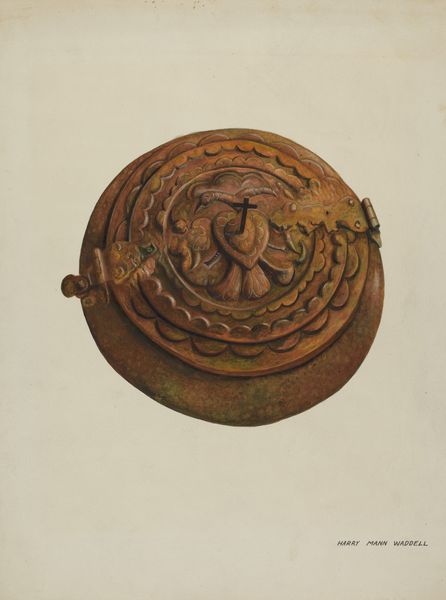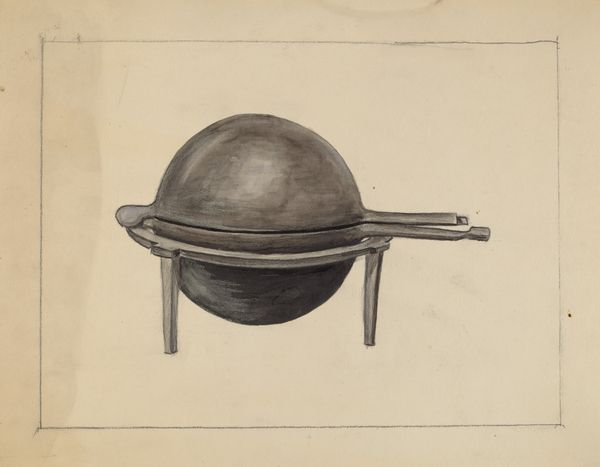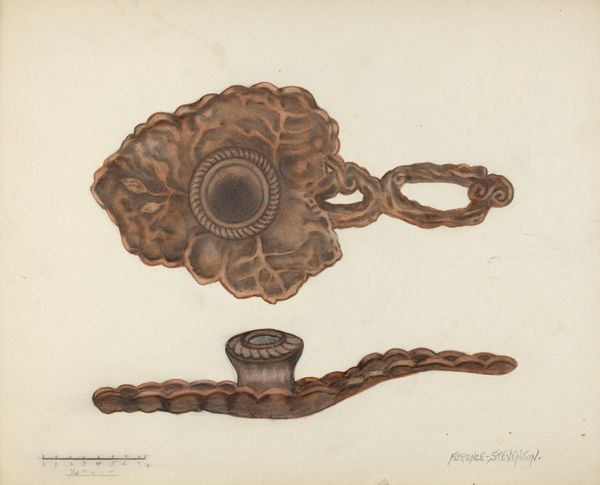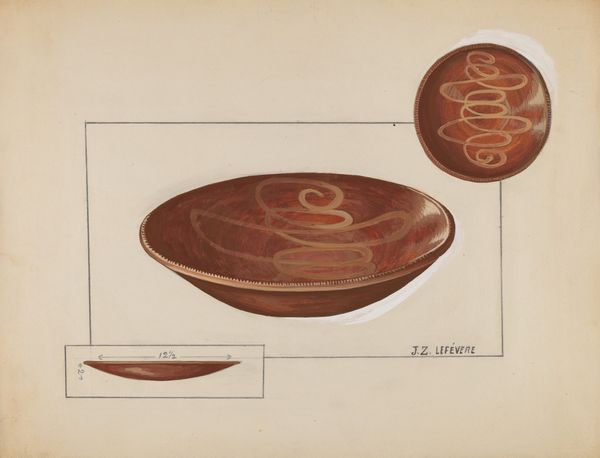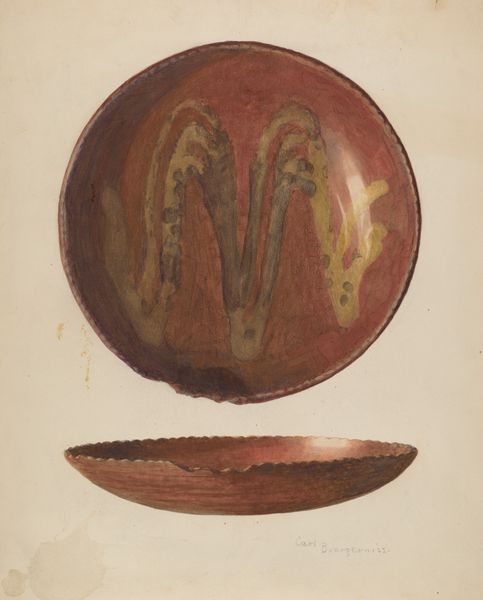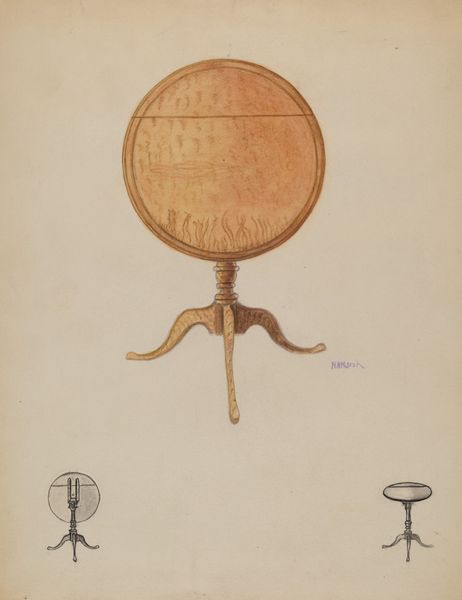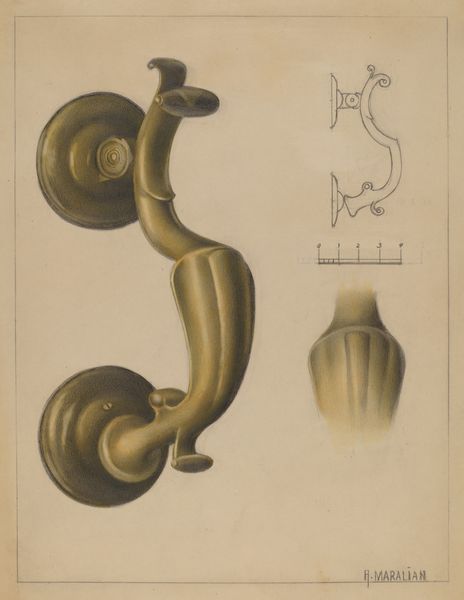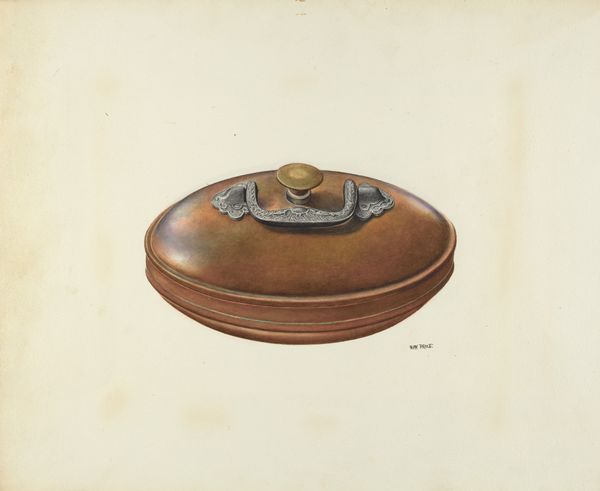
drawing, ceramic, watercolor
#
drawing
#
caricature
#
caricature
#
ceramic
#
watercolor
#
ceramic
#
watercolour illustration
Dimensions: overall: 23 x 30.6 cm (9 1/16 x 12 1/16 in.) Original IAD Object: 5 3/16" high
Copyright: National Gallery of Art: CC0 1.0
Curator: Well, the first impression I have is that it's quite… weighty. Even in this drawing, there’s a real sense of gravity to it, doesn't there? Editor: Yes, especially given its context. The artist, William O. Fletcher, made this watercolor and drawing around 1938. It’s titled "The Globe" Coin Bank. Curator: "The Globe" Coin Bank... It’s so interesting to think about the globe as something to be saved in, secured almost. The object itself, perched precariously on those three almost bird-like claws, feels inherently unstable, despite its hefty form. Considering the era, and given it's a bank shaped like the world, I can't help but wonder what anxieties or hopes about global finances were being projected onto such an everyday item. Editor: That’s precisely the point. The late 1930s were defined by financial uncertainty and geopolitical tension, weren’t they? I imagine most families approached savings cautiously, maybe even defensively. Seeing the globe as something that locks, that physically embodies this financial vulnerability— it’s quite telling. Its existence reflects and reinforces those conditions, in a domestic setting no less. Curator: I wonder about the materiality, too. Was it actually made from ceramic, as the metadata suggests? And how does the use of watercolor in the drawing represent the potential material qualities and lived existence of the ceramic object? The coloring and rendering makes the piece look rather dark and forbidding… a sphere not radiating the vibrant opportunities often symbolized by "the globe", but trapping them instead. The dark metallic finish combined with a slot feels very much like the kind of institutionalized sphere we associate with late-stage capitalism. Editor: Ceramics at this time would be industrially produced for items precisely like these. This points us to themes like democratization, consumer culture, and mass production. However, because ceramics is generally a very affordable, versatile medium, maybe the choice to simulate a bronze finish actually gestures to aspirations of stability or class mobility. How better to mimic financial stability than to feign an enduring material? Curator: I hadn't considered it that way. On second thought, seeing the watercolour wash imitate what you mentioned—a metal like bronze, an ancient token of wealth and trade—could gesture towards the desire for personal agency, a more profound sense of individual security and power, in a very volatile world system. Editor: It’s funny how an image of an object as common as a piggy bank can lead us down these fascinating theoretical paths! Curator: Absolutely. Makes one see how everyday objects become infused with history.
Comments
No comments
Be the first to comment and join the conversation on the ultimate creative platform.

